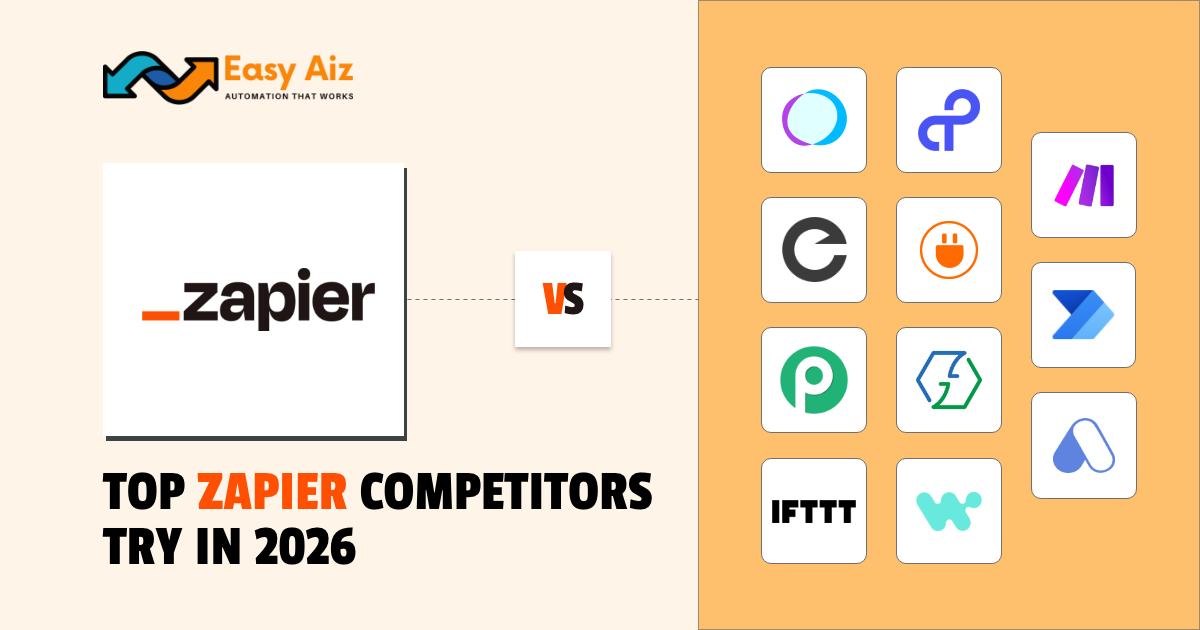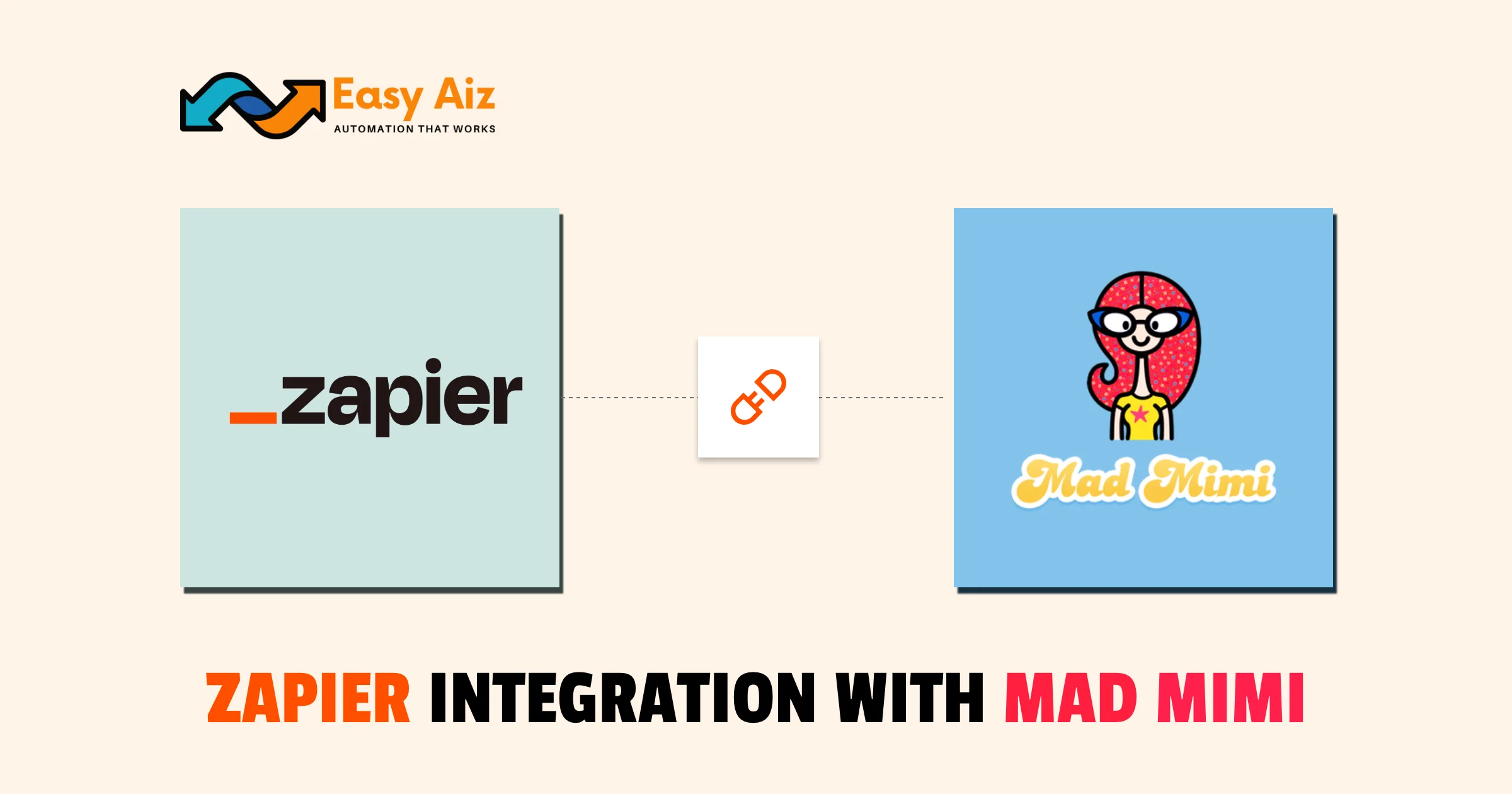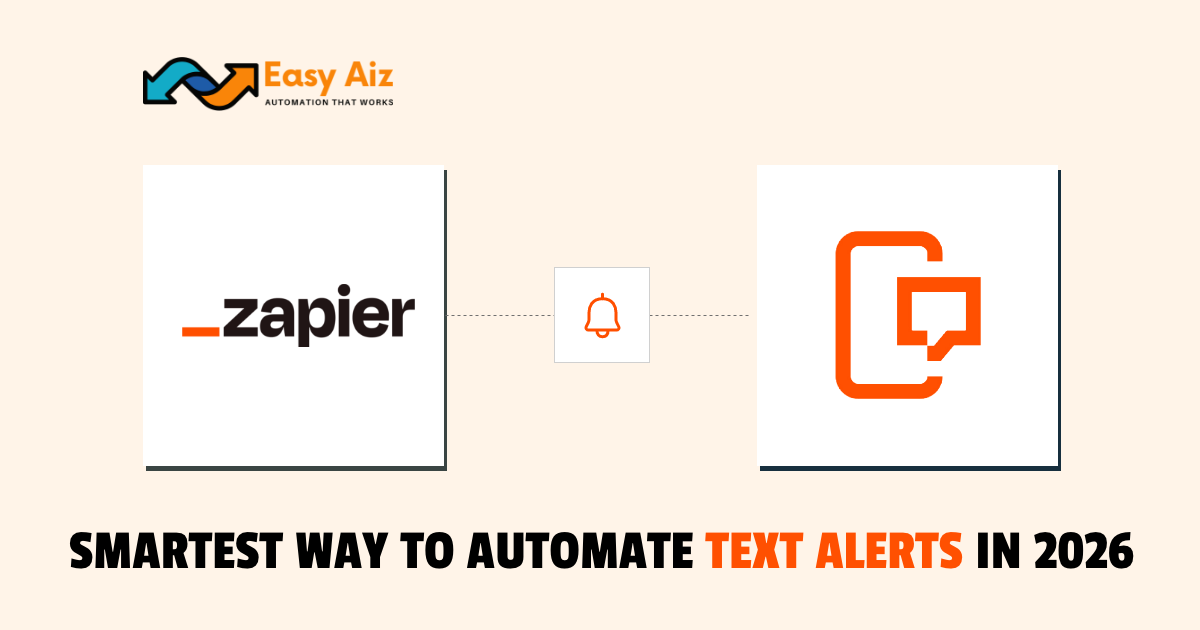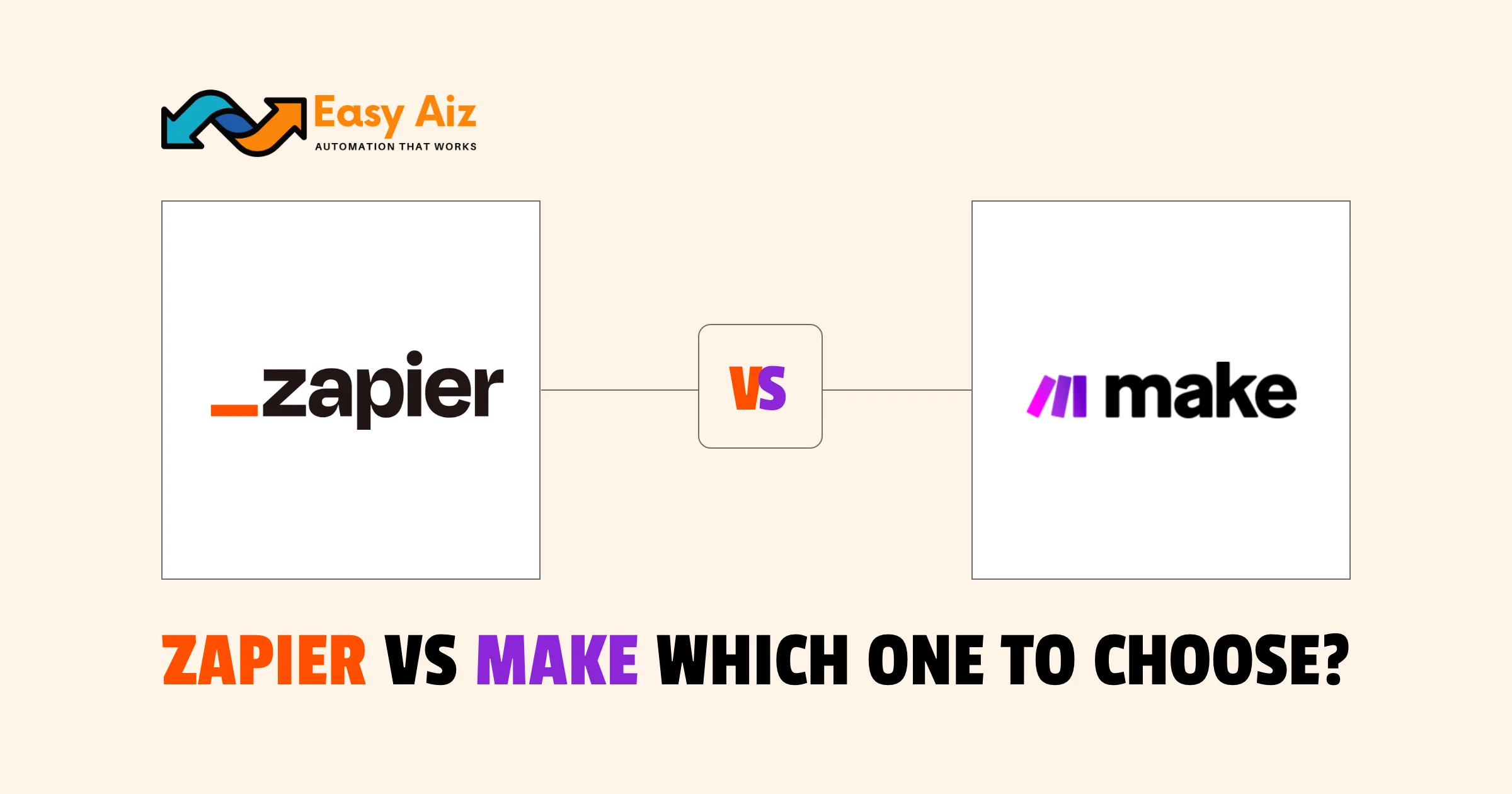
Table of Contents
Zapier vs Make is a popular debate in the world of automation tools. Whilst over 2.2 million people use Zapier to automate workflows, Make handles about 200k users worldwide.
Thus confusing users to make a final choice between both. The same is why, we have forward which will be discussing an unbiased analysis between both, unleashing its key features, pricing plans and other essential information. So, make sure to stay hooked till the end.
Let’s begin.
A Complete Comparison Guide between Zapier vs Make to Choosing the Right Automation Tool
What is Zapier?
Zapier is an online automation that connects apps. It helps you automate tasks without needing you to learn coding at all. Some of its notable features include:
- The system connects with more than 8,000 popular applications including Slack and Gmail effortlessly.
- Use simple workflows like Zaps to automate repetitive tasks.
- Create complex workflows with multiple steps to save more time.
- Helps you to add rules and run actions while meeting the commercial requirements.
What is Make?
Make is another popular platform for automating the workflows. Initially the platform was called Integromat. However, it got changed to Make in 2022 for rebranding purposes. Some of its key features include:
- Drag-and-drop editor.
- Processes data instantly between apps without delay.
- Use filters, routers, and conditions to control complex workflows.
- Automatically handles errors and alerts you if something breaks.
Zapier vs make terminology comparision
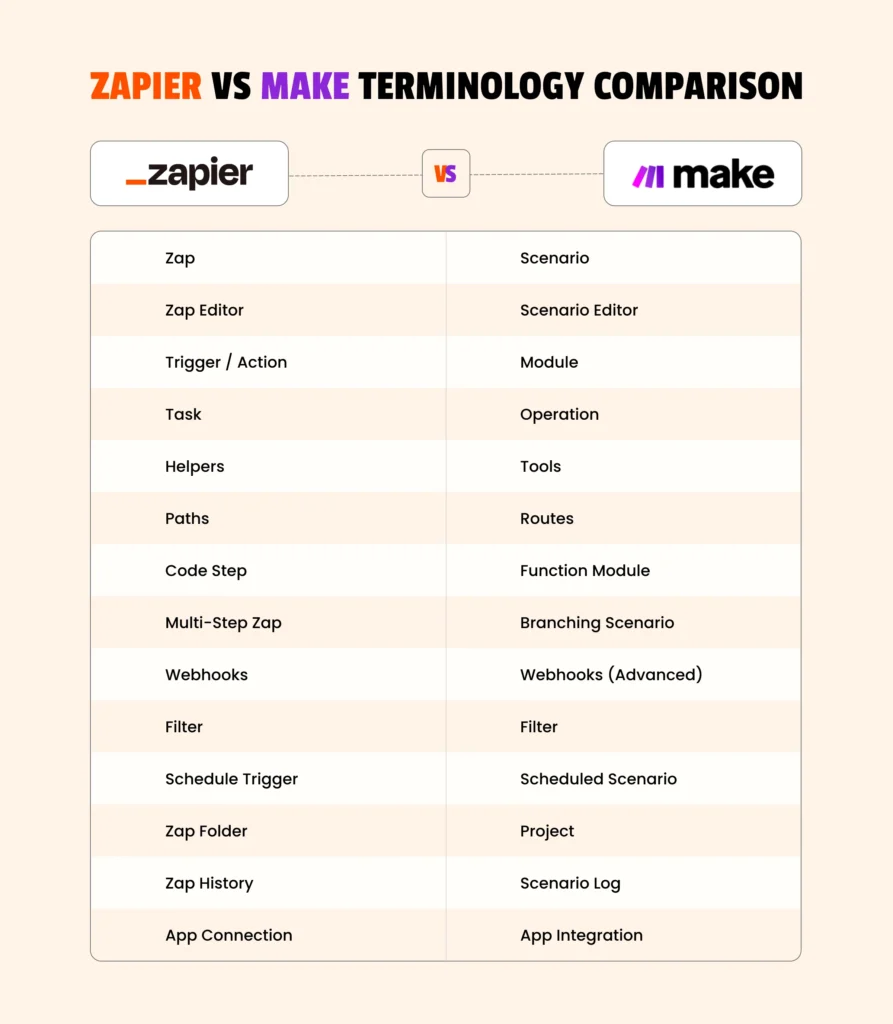
User Interface & Ease of Use
Here is an unbiased analysis of of user interface of both the platforms:
- Zaiper: The platform has a simple interface, especially designed for non-technical people.
- Make: It offers a visual interface with flowchart-style. Best suited for advanced users. It is great for users who want more control and detailed automation.
Learning Curve Comparison
Automation Capabilities
- Zapier: Zapier helps in creation of simple tasks called Zaps. Each Zap starts with a trigger and follows one straight path to complete actions.
- Make: Make allows you to build more complex tasks with many steps. You can add branches and paths to handle different situations in one workflow.
Integration & App Support
- Zapier: Supports over 8,000 apps. Furthermore, it allows sending and receiving data using wehbooks and offers third-party app connections.
- Make: Supports 2,000+ apps and continues to add more with time. In addition, allows custom integration for advanced users and also supports custom webhooks and gives more control over API calls.
Zapier Pricing Plans
- Free: Automate AI-powered workflows with 100 tasks per month.
- Professional: Automate AI-powered workflows with the full power of Zapier for $19.99/ month.
- Team: Build and manage automated AI-powered workflows with your team for $69.99/ month.
- Enterprise: Scale AI-powered automation across multiple departments. Contact for pricing.
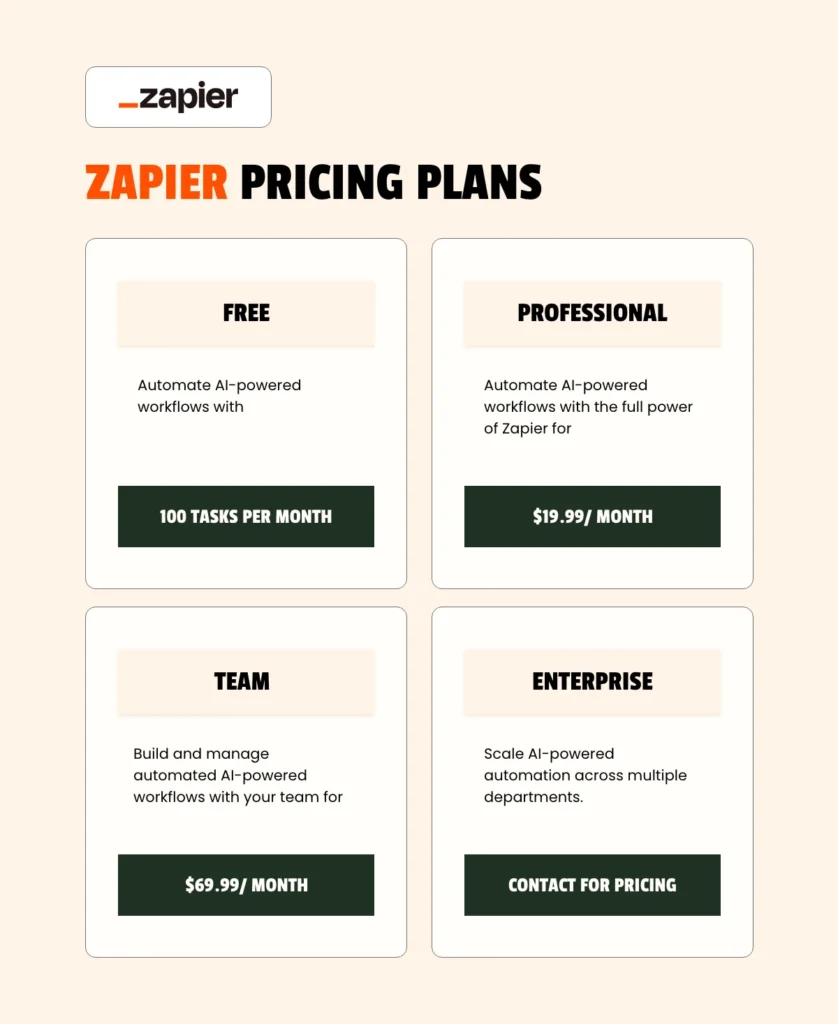
Make Pricing Plans
- Free: 1,000 operations/month, no-code visual workflow builder, 2000+ apps, Routers & filters and 15-minute minimum interval between runs.
- Core: Includes everything in a Free plan with unlimited active scenarios, More control with scheduled scenarios, down to the minute, Increased data transfer limits and Access to the Make API for $9/ month.
- Pro: Includes everything in Core plan with a priority scenario execution, Custom variables, Full-text execution log search and Advanced automation features for $16/ month.
- Teams: Includes everything in Pro plan with Teams and team roles and helps to create and share scenario templates for $29/ month.
- Enterprise: Includes everything in the team plan with advanced features. Contact for pricing.

Zapier vs Make: Advanced Features
Zapier and Make both offer powerful tools for users who want more than basic automation.
Webhooks, Filters, and Code Steps
Make also supports webhooks and gives more flexibility with how data is handled. You can add functions, conditions, and custom logic to change how your tasks run.
Scheduling and Triggers
Zapier allows you to set schedules to run tasks daily, weekly, or at custom times. Make also supports scheduling and gives more control over how and when tasks start.
API Integration Depth
Make offers deeper API access, allowing advanced users to send custom API requests. At the same time, Zapier also supports API actions but is slightly easier and more beginner-friendly.
Zapier’s AI Steps vs Make’s Data Manipulators
Collaboration and Team Use
Make has “data manipulators” that help format, clean, or change data as it flows. However, Zapier now includes AI features that help automate tasks using smart suggestions. Both platforms support smart automation, but in different ways.
Zapier
- Zapier makes it easy to share Zaps and folders with your team.
- You can invite team members and choose who can view or edit workflows.
- It works well for small teams that need simple and clear collaboration.
- Zapier also lets you organize Zaps into folders for easy access and control.
Make
- Make offers more detailed tools for teams and client work.
- You can create separate projects and assign team members with specific roles.
- It supports advanced permission settings for better access control.
- Make is ideal for larger teams or agencies managing multiple workflows.
Customer Support Zapier
On the other hand, Make also provides support through emails and in-app chat for users. However, the delayed replies can create problems for the new users.
Security & Compliance
Zapier
Make
Real-World Use Cases
Examples of Automations Built with Zapier
Examples of Scenarios Built with Make
Make is ideal for building complex workflows across multiple apps. For instance, it can gather form responses, clean the data, and send reports in Slack. It’s often used for managing databases, syncing large systems, or tracking inventory.
Industry-Specific Comparisons
Conclusion
To ease the situation for you, we have created the guide above, which provides an unbiased comparison between the two, discussing their key features, pricing plans, pros, cons, and more. So, make sure to read from start to end before you take a final call.
Table of Contents
Get started with Easy Aiz
Have any project in mind? Book a free call now to automate your Project !!
FAQ
Make offers more control and flexibility for complex workflows. It scales better for large businesses with custom automation needs. Zapier is simpler and great for small to midsize teams.
Yes, both support popular apps like CRM tools, Slack, Gmail, and Google Sheets. Zapier connects over 6,000 apps, covering most daily business tools.
On the other hand, Make also supports many apps and offers deeper integration with API support. You can build useful workflows in both, based on your needs and skill level.
Get started with Easy Aiz
Have any project in mind? Book a free call now to automate your Project !!
More Blogs
Explore top 11 closest Zapier competitors- each offering a unique set of features and facilities.
How to Set Up Zapier Integration with Mad Mimi and Outgrow Zohaib Ali 10/07/2025 Table …
Explore some of the best email marketing softwares in 2025 along with their key features, pros, cons and pricing plans.
SMS by Zapier: The Smartest Way to Automate Your Text Alerts in 2026 Ayan Waraich …
